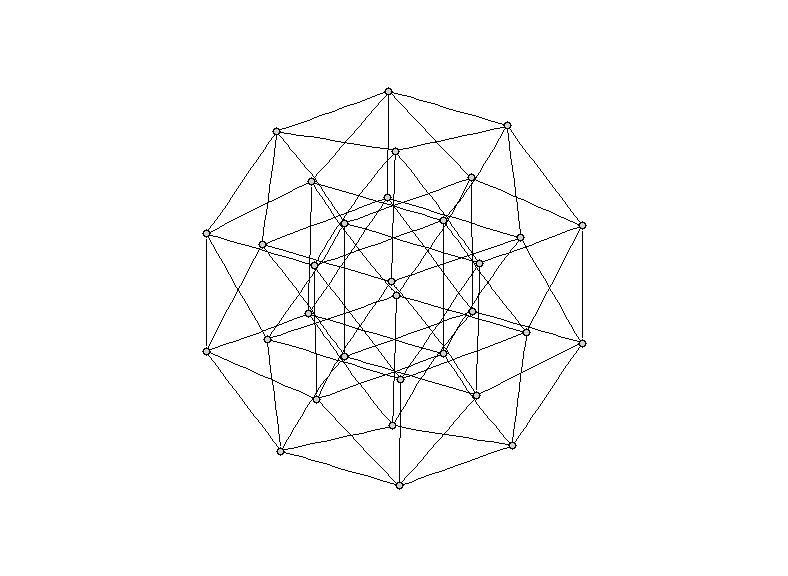Drawing polytopes with Haskell and GraphViz

So I was toying with using Graphviz to render polytopes (higher-dimensional generalisations of polygons and polyhedra). I quickly got bored writing .dot files by hand, and switched to the Haskell programming language.
Here's some code that generates a .dot file containing the vertices and edges of a cube of arbitrary dimension:
> module Main where
>
> import System(getArgs)
>
> type Node = [Bool]
>
> edges node = filter (\(u,v) -> u /= v) $ zipWith (\n b -> (n, zipWith (||) n b)) (repeat node) bits
> where
> bits = map bit [0..(n-1)]
> bit b = map (== b) [0..(n-1)]
> n = length node
>
> nodes 0 = [[]]
> nodes d = concatMap (\n -> [False:n, True:n]) ns where ns = nodes (d-1)
>
> main = do
> args <- getArgs
> let d = read (head args) :: Int
> e = concatMap edges (nodes d)
> putStrLn ("strict graph Cube" ++ (show d) ++ "D {")
> putStrLn " node [label=\"\",shape=\"circle\",width=0.1,height=0.1,fixedsize=true,style=\"filled\"];"
> sequence (map printEdge e)
> putStrLn "}"
> where
> printEdge (u,v) = putStrLn (" " ++ showNode u ++ " -- " ++ showNode v ++ ";")
> showNode n = "p" ++ map showCoord n
> showCoord True = '1'
> showCoord False = '0'Above is the output for a cube of 5 dimensions, rendered with neato from Graphviz.
I also wrote code for the cross polytope (in 3 dimensions it's an octahedron):
> module Main where
>
> import System(getArgs)
>
> type Node = Int
>
> edges d nodes node = filter (\(u,v) -> u < v && u /= (v + d) `mod` (2 * d)) $ zip (repeat node) nodes
>
> nodes d = [0..(2*d -1)]
>
> main = do
> args <- getArgs
> let d = read (head args) :: Int
> n = nodes d
> e = concatMap (edges d n) n
> putStrLn ("strict graph Cross" ++ (show d) ++ "D {")
> putStrLn " node [label=\"\",shape=\"circle\",width=0.1,height=0.1,fixedsize=true,style=\"filled\"];"
> sequence (map printEdge e)
> putStrLn "}"
> where
> printEdge (u,v) = putStrLn (" " ++ showNode u ++ " -- " ++ showNode v ++ ";")
> showNode n = "p" ++ show nThe output from neato is ugly for this structure, but with circo it looks pretty good.
The simplex is left as an exercise for the reader. These 3 (cube, cross, simplex) exist in all dimensions, when I refind my copy of Coxeter's opus I might attempt code for the others that only exist in certain dimensions.